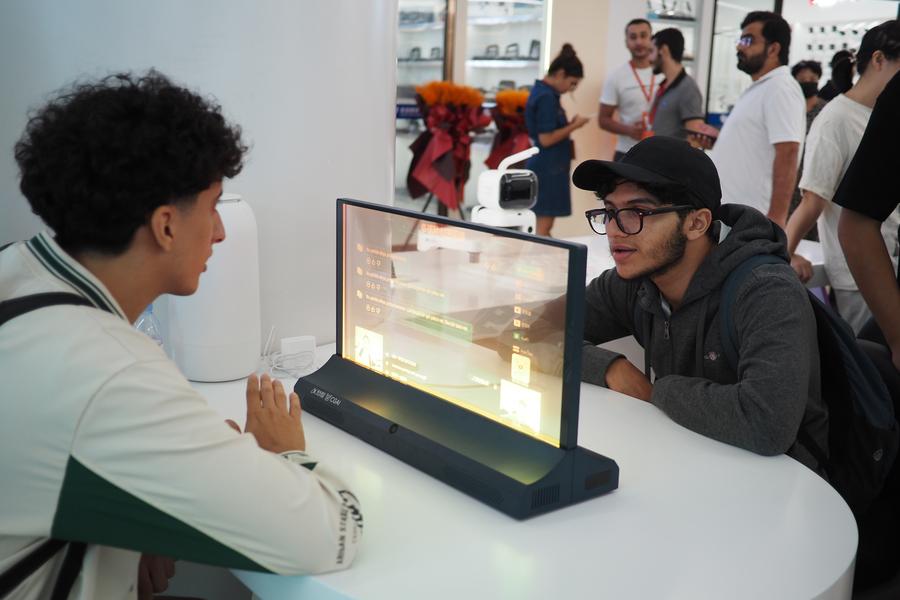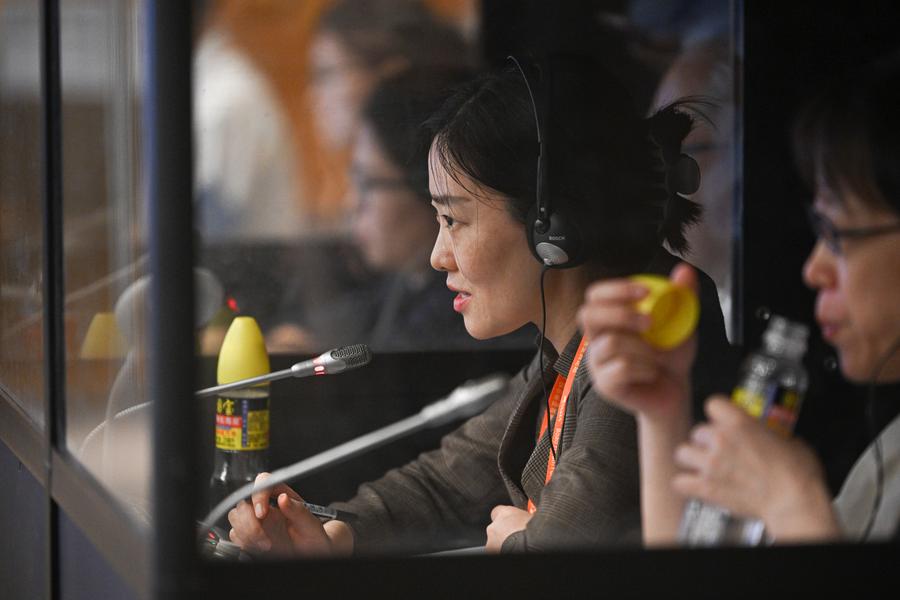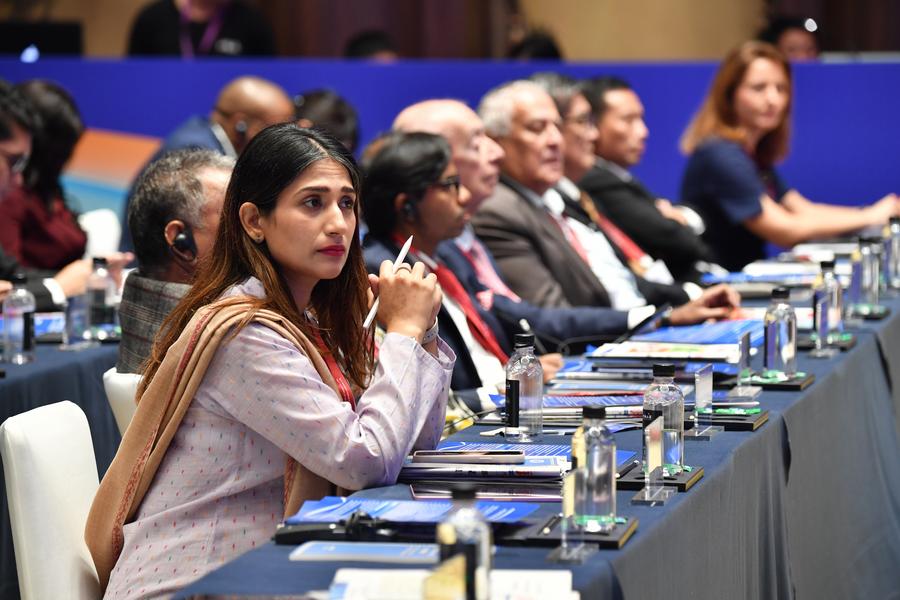
Yan Yuchen realized that her beloved translation program would come to a halt shortly after she returned to campus, ready to begin her second year of training in Monterey, a small town perched on the Pacific coast of California.
Yan studies interpretation and translation at the Middlebury Institute of International Studies at Monterey, also known as MIIS. The training is a grind -- demanding and unrelenting, but offset by the rhythms of the coast and the institute's reputation as a leading school for translators and interpreters worldwide.
But in late August 2025, Vermont-based Middlebury College said it would shutter its graduate programs in Monterey by 2027 -- including its flagship translation and interpretation track.
The college cited steep declines in enrollments and applications. Meanwhile in China, where translation classes also face a shrinking student pool, many point to the disruptive rise of artificial intelligence (AI), reigniting old debates over whether studying foreign languages is still worth the effort.
"Our program has such a strong reputation," said Yan. "Most students who want to study translation hope to make it here." The announcement, she added, left her "utterly stunned."
She was echoed by Liu Leshan, a master's student in an interpretation program at Guangdong University of Foreign Studies (GDUFS) in south China, who said the news had left him unsure about the profession and path he had chosen.
Reaction has been sharp in China -- and for good reason. For decades, its foreign-language programs have punched above their weight, helping break post-1949 isolation, bringing in technology and managerial know-how during the reforms which started in the late 1970s, and later riding the WTO wave to fuel the growth of trade, finance, law and scientific cooperation after 2001.
Along the way, these programs drew a fair share of the nation's brightest students, offering a glimpse of glittering careers on international stages such as the United Nations and the World Bank, where paychecks were comfortably padded.
Yet in recent years, the sentiment has changed. Notably, some Chinese universities have suspended or even scrapped foreign-language programs, and educators and industry practitioners are calling for curriculum adjustment to adapt to the changing market.
WHEN MACHINES CAUGHT UP
Talk of machines replacing human translators and interpreters is hardly new. IBM tried its hand at machine translation as early as 1954, but for decades, humans were able to laugh off the results.
This trend changed in 2016, when Google's Neural Machine Translation system slashed errors significantly, for the first time producing translations approaching human quality. With the recent rise of generative AI tools such as ChatGPT and DeepSeek, the industry now faces not a slow creep but potentially a cliff-edge shock.
Luo Qing, who works in sales at a large translation firm, said one recent quote for a medical project summed up this shift.
A full human translation costs 800 yuan (about 113 U.S. dollars) per thousand Chinese characters, while a "machine translation plus human editing" package costs 300 yuan, she revealed.
Her company's traditional translation business has shrunk by three-quarters, while AI-assisted tasks -- ranging from machine translation and post-editing to subtitling, have surged.
According to an April 2025 report by the Translators Association of China, hybrid workflows have become the norm in the industry, with 97.1 percent of translation firms now using AI tools. Of their projects, 26 percent are delivered as pure machine translations, while another 33.2 percent rely on machine translation coupled with post-editing.
The picture is more complicated in the interpretation market. Practitioners report that human interpreters are still preferred for in-person scenarios, but many online meetings have embraced AI-generated subtitles.

ELITE HUMAN TRANSLATORS
While acknowledging that AI has boosted translation efficiency, Ren Wen, dean of the Graduate School of Translation and Interpretation at Beijing Foreign Studies University, also said: "AI can, to a degree, substitute for medium- and lower-level human work, but it is unlikely to displace top-tier translators and interpreters any time soon."
Observers say human translators and interpreters still carry far more credibility than algorithms in diplomatic talks, business negotiations or policy disclosures. Concerns about data leaks or the sensitive nature of political documents prevent AI from participating in this translation process.
Liability is another sticking point. In legal, medical or contractual texts, a mistranslation can cost dearly -- and yet people cannot pin responsibility on a machine.
Chai Ying, vice general manager of China Translation Corporation, said humans remain essential for judging AI translations and tailoring them to the context.
To thrive in the AI era, human translators still need to master the basics of their craft, Chai said. "To be able to evaluate AI translations, we must be good at language and translation skills ourselves."
Many language and translation programs, notably, are shifting toward more interdisciplinary offerings to broaden the skills students have under their belts.
GDUFS, for instance, has partnered with Macao Polytechnic University to introduce dual-degree pathways that combine translation with computer-related disciplines at the undergraduate level.
Also, other institutions such as Shanghai International Studies University, have launched doctoral programs to cultivate the country's next generation of elite translators and interpreters.
"Future interpreters/translators may wear a lot of hats on the job, sometimes as editor, project manager or cross-cultural consultant," said Xu Ran, an associate professor of interpretation at China Foreign Affairs University.
"It's important for aspiring learners to not only build a strong base in language and culture, but also pick up a range of skills and learn to work with AI," she said.

SPOTLIGHT ON CHINA
Analysts highlight that China's translation industry faces not only the disruptive rise of generative AI but also unprecedented opportunities in Chinese-to-foreign translation.
They say that as China moves closer to the center of the global stage, the world is increasingly keen to learn about the country and engage in endeavors such as the Belt and Road Initiative (BRI).
Chinese AI firm iFLYTEK said its translation device, which has mastered more than 80 foreign languages, has proven popular among managers of small and micro firms, as they are traveling more often to non-Anglophone countries participating in the BRI.
Will increasingly versatile AI one day make human interpreters obsolete? Sun Jingting, director of AI translation at iFLYTEK, said that this is not what such systems are designed to do.
"Business negotiations are also about conveying emotions and bridging cultures. This is where humans are not to be replaced," he noted.
The adoption of AI often reflects practical constraints, as human interpreters of some less spoken languages are often in short supply, or their services are simply beyond the reach of small businesses, Sun explained.
In fact, while traditional translation fields are shrinking, sectors such as IT and the Internet, culture and media, and cross-border e-commerce are increasingly snapping up language talents offering cross-disciplinary skills.
Liu, for example, has secured a job offer in overseas sales from a domestic manufacturer of educational equipment, which is now looking to expand into more markets. The job, he said, will require nuanced, empathetic exchange that goes beyond the cold, clinical precision that AI translation provides.
"AI is already woven into the study, work and daily lives of students in the translation and interpreting fields," he said.
"I don't see it as something poised to bury the profession, but as a tool that, if we learn to use it well, can turbocharge our competitiveness. And that, to my mind, is a good thing."
















